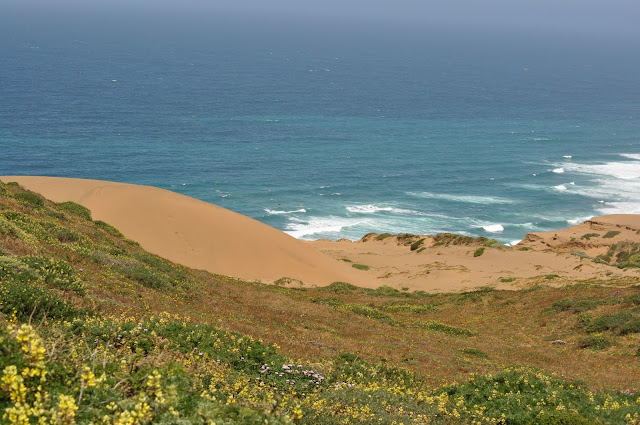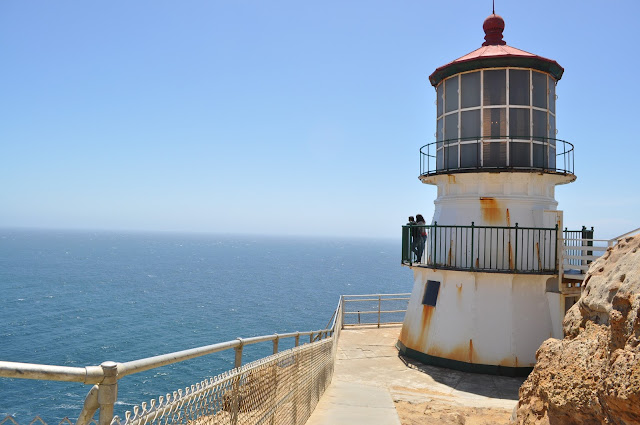June 13, 2016
Point Reyes National Seashore is located on the Point Reyes Peninsula in Marin County, California not far from San Francisco. It is approximately 71,000 acres.
Two points of interest at Point Reyes include:
The Point Reyes Lighthouse (which first shone in 1870) and the Point Reyes Lifeboat Station which is listed as a National Landmark. It is the last remaining example of a rail launched lifeboat station that was common on the Pacific coast.
The National Park Service Brochure Regarding the Lighthouse is a short piece that is very well written and interesting. Here are excerpts from their literature:
"Point Reyes: A Treacherous Obstacle to Mariners
Point Reyes is the windiest place on the Pacific Coast and the second foggiest place on the North American continent. Weeks of fog, especially during the summer months, frequently reduce visibility to hundreds of feet. The Point Reyes Headlands, which jut 10 miles out to sea, pose a threat to each ship entering or leaving San Francisco Bay. The historic Point Reyes Lighthouse warned mariners of danger for more than a hundred years.
The Point Reyes Lighthouse, built in 1870, was retired from service in 1975 when the U.S. Coast Guard installed an automated light. They then transferred ownership of the lighthouse to the National Park Service, which has taken on the job of preserving this fine specimen of our heritage.
All lighthouses in the United States are now automated because it is cheaper to let electronics do the work. Many decommissioned lighthouses were transformed into restaurants, inns or museums. The lighthouse at Point Reyes National Seashore is now a museum piece, where the era of the lightkeepers' lives, the craftsmanship and the beauty of the lighthouse are actively preserved"
"The Fresnel Lens: The French Jewels
The lens in the Point Reyes Lighthouse is a "first order" Fresnel (fray-nel) lens, the largest size of Fresnel lens. Augustin Jean Fresnel of France revolutionized optics theories with his new lens design in 1823.
Before Fresnel developed this lens, lighthouses used mirrors to reflect light out to sea. The most effective lighthouses could only be seen eight to twelve miles away. After his invention, the brightest lighthouses could be seen all the way to the horizon, about twenty-four miles.
The Fresnel lens intensifies the light by bending (or refracting) and magnifying the source light through crystal prisms into concentrated beams. The Point Reyes lens is divided into twenty-four vertical panels, which direct the light into twenty-four individual beams. A counterweight and gears similar to those in a grandfather clock rotate the 6000-pound lens at a constant speed, one revolution every two minutes. This rotation makes the beams sweep over the ocean surface like the spokes of a wagon wheel, and creates the Point Reyes signature pattern of one flash every five seconds"
Drakes Bay and Beach at Point Reyes are named in honor of Sir Franncis Drake because it is considered to be his most likely landing spot on the west coast of North America during his 1579 circumnavigation of the world by sea.
Unedited photos
Yellow flowers everywhere!!!
 |
| Be ready to go down a lot of stairs to get to the lighthouse and remember, you will have to go back up them! |
 |
| I found MORE yellow flowers California Poppy |
 |
| Elephant Seals! They look like dead fish all over the beach - LOL |















































































































































No comments:
Post a Comment